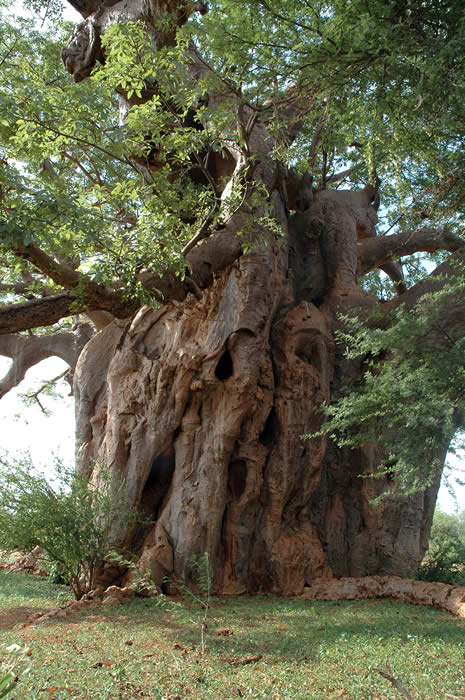By Alex Tung
In this regular series we profile African indigenous crops that can improve food security and protect the environment.
The basic needs for human survival include food, water and shelter. Baobab, a tree indigenous to the semiarid regions of sub-Saharan Africa can provide all three, and more. Baobabs can be found in areas from the Senegal coast to northern South Africa, and Madagascar, where seven out of the eight species occur.

The baobab’s leaves, fruit and seeds are all edible. In West African countries, including Ghana and Burkina Faso, leaves are commonly ground up and used in soups, and for condiments and sauces served with yam, cassava, maize, millet and sorghum. The leaves are high in protein and contain a wide spectrum of essential amino acids. They are high in lysine, which is often missing in the daily diets of poor populations who consume mostly cereals and tubers, and little meat. As these leaves are also high in vitamin A, frequent consumption should be encouraged in pregnant women and children as it can help prevent blindness and birth defects resulting from vitamin A deficiency.
The baobab’s fruit, known as “monkey bread,” can be used to make flour or stirred into drinks or porridge. Its pulp has ten times the vitamin C of an orange, which explains the tart flavor. It is often beaten into pancakes and dried in the sun. The kernels of baobab seeds, with a taste similar to almonds, can be roasted and made into creamy butter. Due to their long shelf-life, and high energy and protein content, both of these can be important food sources in times of low crop yields and natural disaster.
Beyond its uses as a staple food, other parts of the tree such as its bark are used as cooking fuel for stoves, pottery kilns and ovens. In dry areas, the baobab’s large, hollow stem holds a valuable water resource, as it can store as much as 10,000 liters of water for many months.
Local populations often build shelter and keep livestock inside of baobabs’ trunks. In Australia, where the only species outside of Africa originates, there is even a prison built inside a baobab trunk.
While the baobab can act as a reliable provider for sub-Saharan Africa’s malnourished populations, some particular species require special care and protection. Poor land management and deforestation has left the Giant Madagascar baobab, widely honored as the dwelling place of spirits and known locally as renala (Mother of the Forest), scattered in degraded lands. It is classified as an endangered species by the International Union for Conservation of Nature.
Some people are reluctant to grow baobab due to cultural taboos and its slow seedling process. But several villages in Niger have been producing seedlings in nurseries since the 60s. Once mature, baobab is resilient and almost “immortal.” Results from carbon dating found some baobab species to be over 2000 years old. Nutrition and poverty relief programs should explore more widely the tree’s potential role in improving food security for generations ahead.
To learn more about sub-Saharan Africa’s indigenous food crops, read Native African Vegetables Could Help Solve Food Crises, Traditional Food Crops Provide Community Resilience in Face of Climate Change, Kenyan Professor Promotes Indigenous Food to Solve Climate Change Food Crisis, Amaranth: Food Production Without Attention, African Eggplant: The Fruit that is Enjoyed as a Vegetable, Pigeonpea: A Little Crop That’s Come a Long Way and Many Good Reasons to Grow Teff.
Alex Tung is a research intern with the Nourishing the Planet project.

Danielle Nierenberg, an expert on livestock and sustainability, currently serves as Project Director of State of World 2011 for the Worldwatch Institute, a Washington, DC-based environmental think tank. Her knowledge of factory farming and its global spread and sustainable agriculture has been cited widely in the New York Times Magazine, the International Herald Tribune, the Washington Post, and
other publications.
Danielle worked for two years as a Peace Corps volunteer in the Dominican Republic. She is currently traveling across Africa looking at innovations that are working to alleviate hunger and poverty and blogging everyday at Worldwatch Institute’s Nourishing the Planet. She has a regular column with the Mail & Guardian, the Kansas City Star, and the Huffington Post and her writing was been featured in newspapers across Africa including the Cape Town Argus, the Zambia Daily Mail, Coast Week (Kenya), and other African publications. She holds an M.S. in agriculture, food, and environment from Tufts University and a B.A. in environmental policy from Monmouth College.








